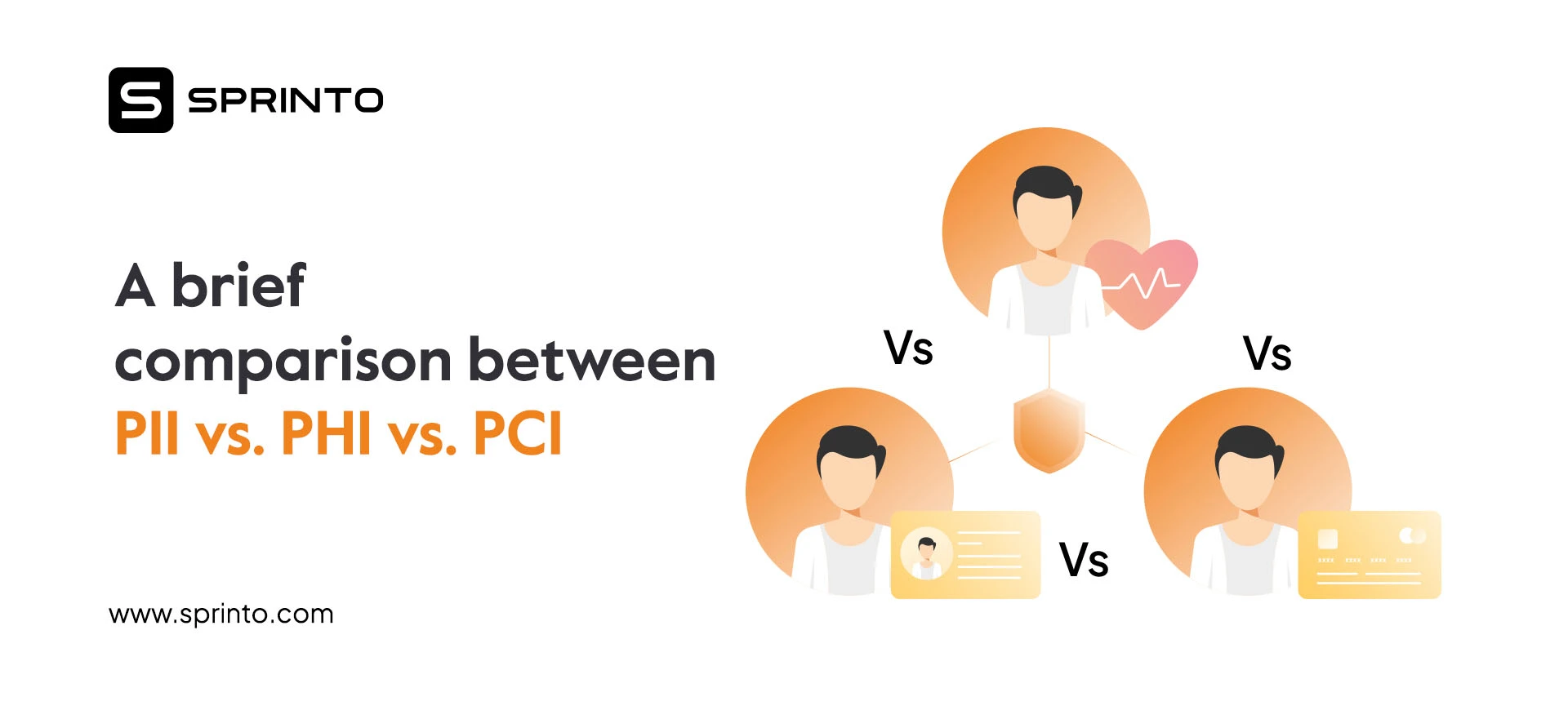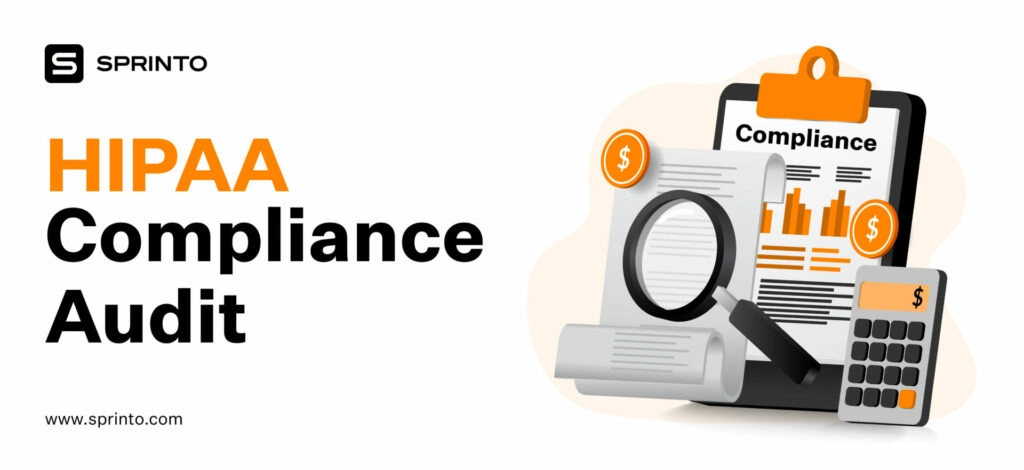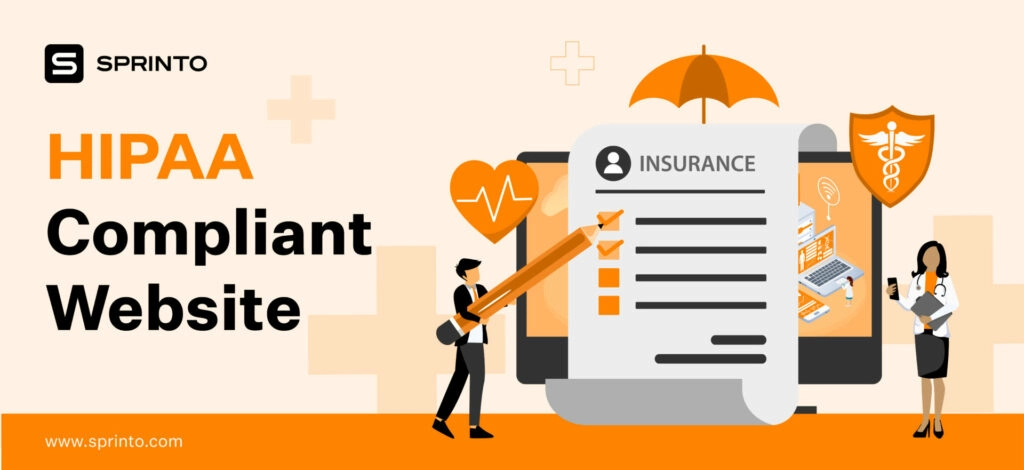The protection of personal information is becoming critical for businesses worldwide in an increasingly digital world where customer data is acquired at multiple touchpoints.
Global privacy laws mandate the protection of three main categories of personal data: Personally Identifiable Information (PII), Payment Card Industry (PCI) data, and Protected Health Information (PHI).
The acronyms PII, PCI, and PHI stand for several categories of information that are protected by data privacy laws, rules, or industry standards because they are sensitive in nature.
What is PII, PHI, and PCI?
There are three main types of personal information that global privacy regulations need protection of: Personally Identifiable Information (PII), Payment Card Industry (PCI) data, and Protected Health Information (PHI).
Personal Identifying Information (PII), Protected Health Information (PHI), and Payment Card Industry (PCI) data are examples of relevant security measures that organizations implement to conduct business in a way that ensures the safety and sensitivity of the personal information of the data owner.
Difference between PII, PHI, and PCI
Each one differs in terms of its traits and needs for protection, yet they all share a common usage. PHI refers to any health-related information that includes any of the 18 elements identified by HIPAA, such as medical records, billing information, and treatment histories. PII, in contrast, includes data that can be used to identify an individual, like names, addresses, and email addresses. Unlike PHI, PII is not subject to HIPAA’s Privacy and Security Rules.
PCI data relates to payment card data, including card numbers, expiration dates, and security codes. This is specifically governed by PCI DSS.
1. Personal Identifying Information (PII)
Personal Identifying Information (PII) is confidential information that belongs to a specific person and, when used alone or in connection with other data kept by an organization, can be used to identify that person.
Organizations need to understand that PII extends beyond basic information like name, address, phone number, and Social Security number and includes other data that may be retained and accidentally exposed as PII.
Examples of PII
- Full Name
- Social Security Number
- Address
- Driver’s License or Passport Number
- Mother’s Maiden Name + Place of birth = could result in Full Name + Date of Birth within public records
PII is regarded as the entry point for fraudulent behavior and is the most frequent information that requires heightened risk identification, breach mitigating controls, and ultimately certification of control design and efficacy by an external auditor through a SOC 2, HIPAA, or PCI DSS engagement.
2. Protected Health Information (PHI)
The most often used type of personal data nowadays is protected health information (PHI). PHI is distinctive due to the range of data that could be protected by the General Data Protection Regulation (GDPR) and the Health Insurance Portability and Accountability Act (HIPAA) as PHI. Any information about a person’s health is regarded as PHI.
Examples of PHI
- General PII information
- Insurance Information
- Billing Information
- Details of service, including test results
- Dates of service for health visits
- Correspondence between provider and patient
3. Payment Card Industry (PCI)
Payment Card Industry (PCI) information includes PII, which is any data used during a payment card transaction. This information frequently relates to the financial services industry.
All businesses that accept or process credit cards as payment should be aware of the need to protect information that falls under the purview of PCI DSS (Payment Card Industry Data Security Standard) and make the required ongoing changes.
Examples of PCI
- General PII information
- Credit Card Chip PIN
- Credit Card Number
- Card Holder Name
- Permanent Account Number (PAN)
The PCI DSS certification standard guarantees that all parties involved—including merchants, payment processors, card issuers, card service providers, and any other organizations that collect, handle, store, or distribute cardholder information—protect the cardholder.
Why do organizations need to protect PII, PHI, and PCI data?
There are several important reasons why organizations need to protect their PII, PHI, and PCI data. Here are some of the most important ones:

1. Privacy protection
PII, PHI, and PCI data involve personal and confidential information about a person. Protecting this information ensures that the personal rights of individuals are protected. Any data breach involving these types of data can lead to identity theft, fraud, financial loss, and other detrimental consequences for the individual whose information is compromised.
2. Legal and regulatory compliance
The protection of PII, PHI, and PCI data is required by a number of laws and regulations.
For instance, the Health Insurance Portability and Accountability Act (HIPAA) in the United States, the General Data Protection Regulation (GDPR) in the European Union, and the Payment Card Industry Data Security Standard (PCI DSS) all demand that organizations put in place specific security measures to protect this sensitive data.
Serious legal repercussions, such as fines, penalties, and harm to the organization’s reputation, may follow non-compliance.
3. Trust and goodwill
Companies that deal with PII, PHI, and PCI data owe it to their clients, patients, and consumers to protect their information. If this data is not protected, confidence is lost, and the organization’s reputation may suffer. Customers are more willing to interact with businesses that show a dedication to data protection and privacy.
4. Financial effect
Security events and data breaches can have a big financial impact on businesses. It can be expensive to fix a breach, notify those who were impacted, offer credit monitoring services, and consider taking legal action. A breach may also cause businesses to lose clients, lose customers, and have their market value decline.
Overall, safeguarding PII, PHI, and PCI data is essential for preserving trust, protecting individual privacy, guaranteeing the long-term success of organizations, and complying with regulations.
Also, check out what is considered a breach under HIPAA
What is the audit process of PII, PHI, and PCI?
In order to audit Personally Identifiable Information (PII), Protected Health Information (PHI), and Payment Card Industry (PCI) data, it is necessary to review and evaluate the security measures, protocols, and practices that have been put in place to safeguard these sensitive data categories. Depending on the relevant laws and industry norms, the precise audit criteria could change.
Here is an overview of the audit process of PII, PHI, and PCI:
1. Defining scope
The systems, applications, procedures, and physical locations that handle PII, PHI, and PCI data should be identified in the audit scope. Understanding data flow, data storage locations and the parties involved in data processing are all part of this.
2. Compliance evaluation
The audit assesses the organization’s adherence to the pertinent laws and standards. In order to make sure that the necessary controls and safeguards are in place to protect PII, PHI, and PCI data. Evaluation includes examining policies, processes, and documentation.
3. Risk evaluation
The auditor evaluates the risks involved in managing PII, PHI, and PCI data. This entails determining potential weak points, dangers, and the possibility and consequences of a data breach. Techniques for risk assessment may include gap analysis, penetration testing, and vulnerability scanning.
4. Response to incidents and breach notification
The organization’s incident response strategy, including how it finds, addresses, and minimizes data breaches, is evaluated as part of the audit. In order to comply with applicable laws and regulations. This involves assessing the procedures for breach notification to affected parties, regulators, and other relevant parties.
5. Remediation and reporting
The auditor creates a report outlining the findings, suggestions, and any defects or non-compliance issues found at the end of the audit. Within a predetermined timescale, the organization is expected to address the flaws that have been discovered and put remedial measures into place.
What happens if an organization fails to protect PII / PHI / PCI?
When an organization fails to protect personally identifiable information (PII), protected health information (PHI), or Payment Card Industry (PCI) data they face legal and regulatory repercussions, financial losses due to fines and penalties, reputational harm leading to a loss of clientele and business, potential lawsuits and legal liability, regulatory investigations and audits, and disruptions to regular business operations.
To prevent these negative results and preserve the confidence of consumers and stakeholders, sensitive data must be protected.
How can Sprinto help you protect PII, PHI, and PCI?
It is evident that the difference between PII vs PHI vs PCI is significant; however, they share a common ground. The very basis of these data is the protection against cybersecurity threats, and they play a huge part in important cybersecurity compliances like SOC 2, HIPAA, and PCI DSS.
Sprinto is a cybersecurity compliance automation solution that helps you achieve the major compliances mentioned above and more. By keeping an eye out for unauthorized access, alerting you to questionable activities, and tracking your progress toward these compliances, Sprinto provides total safety for data.
In order to maintain compliance, Sprinto also lets you set up role-based access control, granular settings, and custom policies. Talk to our experts right away to learn more.
FAQs
How is encryption used to protect PII, PHI, and PCI data?
Sensitive data is encrypted into a format that cannot be read without the proper decryption key. It is frequently used for PII, PHI, and PCI data both in transit (using SSL/TLS protocols, for example) and at rest (encrypting data kept in databases or on disc, for example).
How are breaches of PII, PHI, and PCI data identified?
A number of methods, including intrusion detection systems, security monitoring tools, log analysis, and anomaly detection approaches, can be used to find data breaches. As a proactive measure to stop or address possible breaches, organizations may also employ intrusion prevention systems.
How are access restrictions used to safeguard PII, PHI, and PCI data implemented?
Authentication (such as passwords or biometrics) and authorization techniques (such as role-based access control) are frequently used in conjunction to implement access controls. These safeguards aid in ensuring that only approved users or systems can access and change the sensitive data.
Shivam Jha
Shivam is our in house cybersecurity sage with over six years of experience in cybersecurity under his belt. He is passionate about making the digital world safer for everyone and whipping up Indian delicacies on the weekend.
Explore more
research & insights curated to help you earn a seat at the table.
























